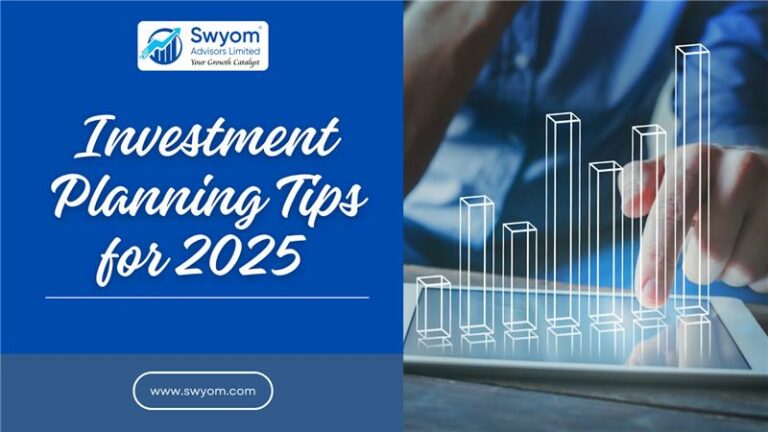Actionable advice for investors to optimize their portfolios before the new year.
As 2025 approaches, it’s time to take a closer look at your investment portfolio and ensure you’re on track to meet your financial goals. Year-end investment planning is crucial for maximizing returns, minimizing taxes, and preparing for the opportunities the new year might bring. Here, we’ll discuss actionable tips to optimize your portfolio and explore key investment options such as SIPs (Systematic Investment Plans), alternative investment funds, and the best investment plans available today.
1. Understand What Investment Planning Means
Before diving into specific strategies, let’s clarify: what is investment planning? It’s the process of aligning your financial resources with your future goals through disciplined investments. A well-crafted investment plan considers factors like your risk tolerance, time horizon, and financial objectives. Whether you’re saving for retirement, a house, or your child’s education, the right investment plan ensures your money works efficiently for you.
2. Reassess Your Financial Goals
The end of the year is the perfect time to evaluate your progress toward financial goals. Ask yourself:
- Have your priorities changed?
- Are your investments aligned with your risk tolerance?
- Are you on track to meet short-term and long-term objectives?
By reassessing your goals, you can adjust your portfolio to better reflect your needs.
3. Maximize Your Investments
Systematic Investment Plans (SIPs) are a cornerstone of disciplined investing. If you’re already investing through SIPs, consider increasing your contribution. If not, start now! SIPs offer the benefits of rupee cost averaging and compounding over time.
Why SIPs Are Ideal for Year-End Planning:
- Consistency: SIPs automate your investments, ensuring regular contributions.
- Flexibility: You can start small and increase your contributions as your income grows.
- Long-Term Benefits: Over time, SIP investments help you build significant wealth.
If you’re wondering, “which is the best investment plan” for steady returns, SIPs in mutual funds are a strong contender.
4. Explore Alternative Investment Funds (AIFs)
Alternative Investment Funds (AIFs) have gained traction among savvy investors. But what is an alternative investment fund, and how can it benefit your portfolio?
AIFs are pooled investment vehicles that invest in assets beyond traditional equity or debt instruments. This includes private equity, venture capital, hedge funds, and real estate.
Benefits of AIFs:
- Diversification: AIFs provide exposure to unique asset classes, reducing portfolio risk.
- High Return Potential: These funds often target high-growth opportunities unavailable in traditional markets.
- Professional Management: AIFs are managed by seasoned experts who leverage market inefficiencies.
AIFs in India:
Many investors are curious about alternative investment funds in India and how they’re regulated. In India, AIFs are categorized into three types:
- Category I: Focuses on social ventures, startups, and infrastructure funds.
- Category II: Includes private equity funds and debt funds.
- Category III: Targets hedge funds and employs complex strategies for short-term gains.
If you’re looking for high-growth opportunities, AIFs could be a strategic addition to your portfolio.
5. Consider Tax-Efficient Investments
Tax planning is a critical part of year-end investment planning. Optimize your portfolio by focusing on tax-saving instruments like:
- ELSS (Equity-Linked Savings Schemes): Offers tax benefits under Section 80C and potential market-linked returns.
- NPS (National Pension System): Provides additional tax deductions for retirement savings.
- Tax Harvesting: Offset capital gains by booking losses strategically.
6. Rebalance Your Portfolio
The end of the year is an excellent time to rebalance your portfolio. Market fluctuations may have altered your asset allocation. Adjust your investments to maintain the desired balance between equity, debt, and alternative assets. For instance:
- If equities have outperformed, consider shifting profits into debt instruments for stability.
- If you’ve underinvested in high-growth opportunities like AIFs, allocate funds accordingly.
7. Review Your Emergency Fund
While planning for the future, don’t forget the present. Ensure your emergency fund is adequately funded to cover at least 6-12 months of expenses. This protects you from having to liquidate investments during market downturns.
8. Seek Professional Guidance
Investment planning can be complex, dynamic and often require customised solutions. Consulting a financial advisor can help you make informed decisions tailored to your financial needs.
Conclusion: Optimize Your Portfolio for 2025
Year-end investment planning is more than a routine check—it’s an opportunity to strengthen your financial future. By leveraging thumb rules of investing topped with a little personalised attention, exploring the potential of alternative investment funds in India, and rebalancing your portfolio- one can maximize returns and achieve financial freedom.
Start the new year with confidence and a concrete plan. After all, the best investment plan is one that aligns with your aspirations and adapts to market dynamics. So, take action today and set yourself up for success in 2025 and beyond.

